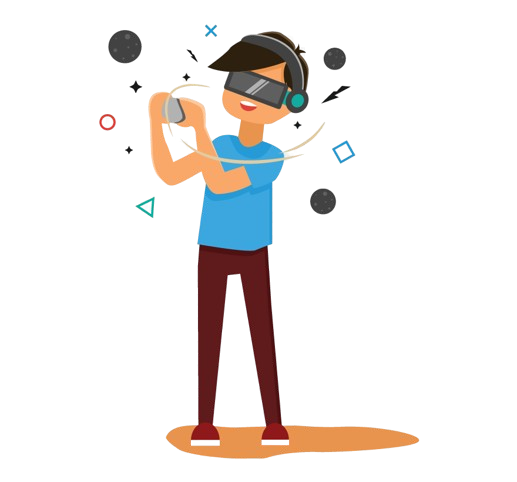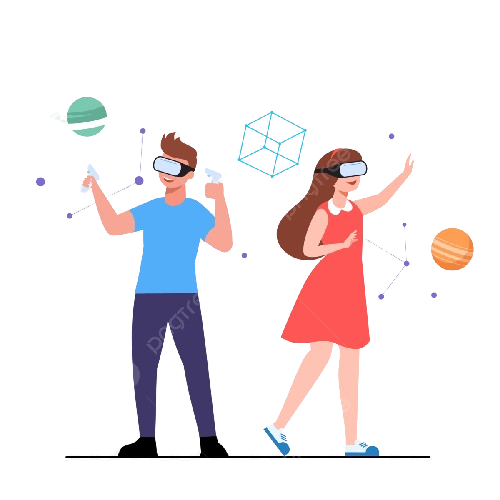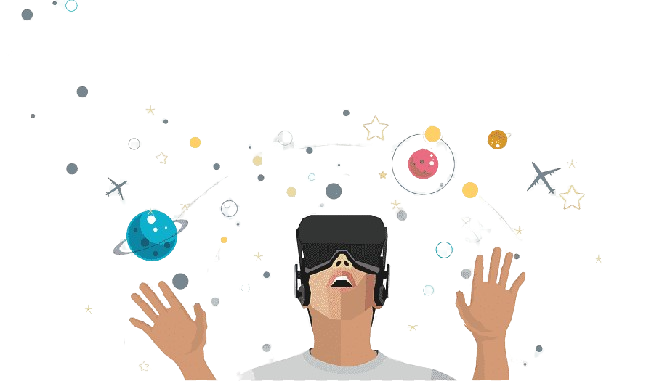Virtual Reality
Virtual reality, augmented reality, and mixed reality, which appear in 3D between the virtual and real worlds, have become a part of our lives. Especially the integration of virtual reality applications with artificial intelligence is appearing in many fields, from education to entertainment, from healthcare to industry. So, what is this virtual reality? How does it work? Which programming language and base is it developed with?
Virtual Reality, or VR, refers to software that creates virtual environments through the use of computer technology. In addition to the 2D visuals seen on computer screens, VR applications provide a 3D experience, allowing the user to be fully immersed in a virtual world.
Virtual reality, which is used in entertainment, education, and even healthcare, has recently become widely accessible to the public. Devices connected to computers, phones, and game consoles prepare the desired virtual environments for user experiences. In these 3D environments, users can feel, see, and hear, experiencing something very close to reality.

Virtual reality technology is typically experienced through VR headsets or applications like Google Cardboard. By connecting with smart devices such as phones, computers, or game consoles, users can wear VR headsets and experience the selected simulation environment. Virtual reality applications can open the door to many innovations for users. They allow people to experience concerts, festivals, and various entertainments as if they were real. Additionally, they offer PC games with more fantastic and realistic experiences. They allow users to perform various desired activities in the virtual world.
Developing VR applications that offer different experiences in the virtual world is based on studies in many areas such as engineering, hardware, software, or design. While the functioning of VR technology is based on software, sound and visual quality depend on the hardware. At the same time, VR headsets developed with engineering efforts are essential for creating 3D virtual environments. When examining the software side of VR applications, many programming languages and frameworks are used. These programming languages vary depending on the purpose of the application and the target audience. Some frequently used platforms are as follows: Unity: Unity is used in many areas such as game development, 3D modeling, and animation. It supports various programming languages like C#, which are used in software development, web development, and mobile applications. Unreal Engine: Unreal Engine is another platform used for developing VR applications. It is commonly used for game development and supports fast-performing programming languages like C++, which are suitable for game mechanics. WebVR: WebVR is a software platform that allows VR applications to run through web browsers. It enables the development of VR applications using web-based languages such as HTML (Hypertext Markup Language), CSS (Cascading Style Sheets), and JS (JavaScript).


Virtual reality is used in many fields such as education, healthcare, gaming, and construction. VR applications, designed to meet different needs in each field, can be summarized as follows: Education: Students gain more lasting learning by working in environments like virtual laboratories and museums. For medical students, virtual surgeries or military training simulations increase the rate of experience while minimizing real-life risks. Gaming Industry: VR games enhance the experience by tracking users’ physical movements and making gameplay more immersive and realistic. For example, games like Superhot VR, Half-Life: Alyx, Assetto Corsa, Star Wars: Squadrons, and Beat Saber offer interactive and immersive experiences. Construction Sector: VR applications allow potential homebuyers to take a virtual tour of buildings and interiors. This helps them better understand the design and make more informed decisions. Automotive Industry: VR offers car manufacturers the opportunity to test vehicle designs and assembly in a virtual environment before producing expensive parts. This reduces costs and speeds up the production process. It also allows for compatibility testing of parts in advance. E-commerce: VR technology enables customers to try on clothes virtually while shopping online and see how they look. This improves the online shopping experience and increases satisfaction for both companies and customers. Architecture Sector: Architects benefit from VR technology to see how buildings or spaces will look and function before they are physically built. This helps better understand architectural designs and offers clients a more realistic preview.